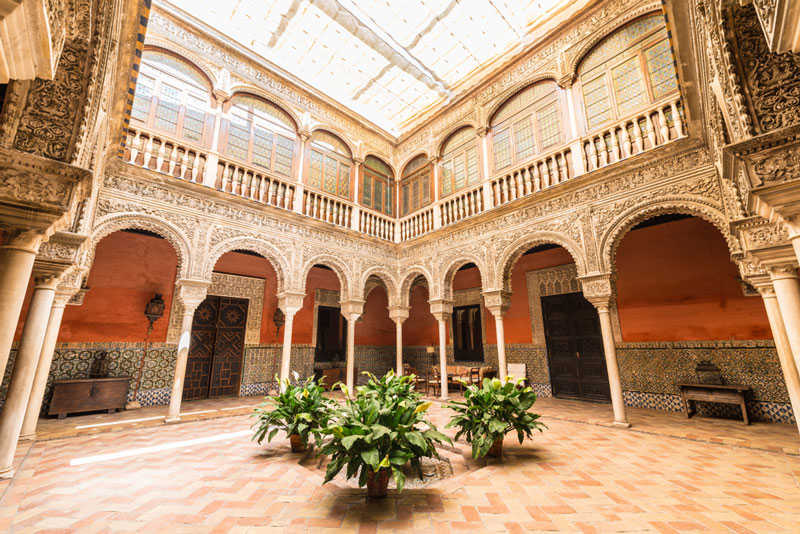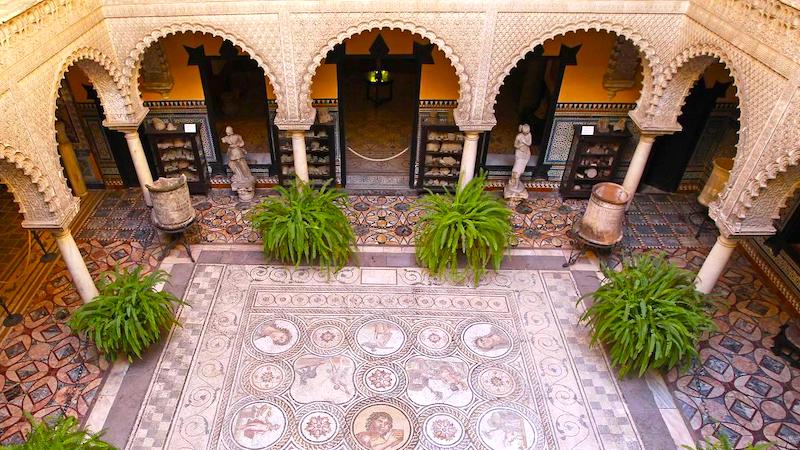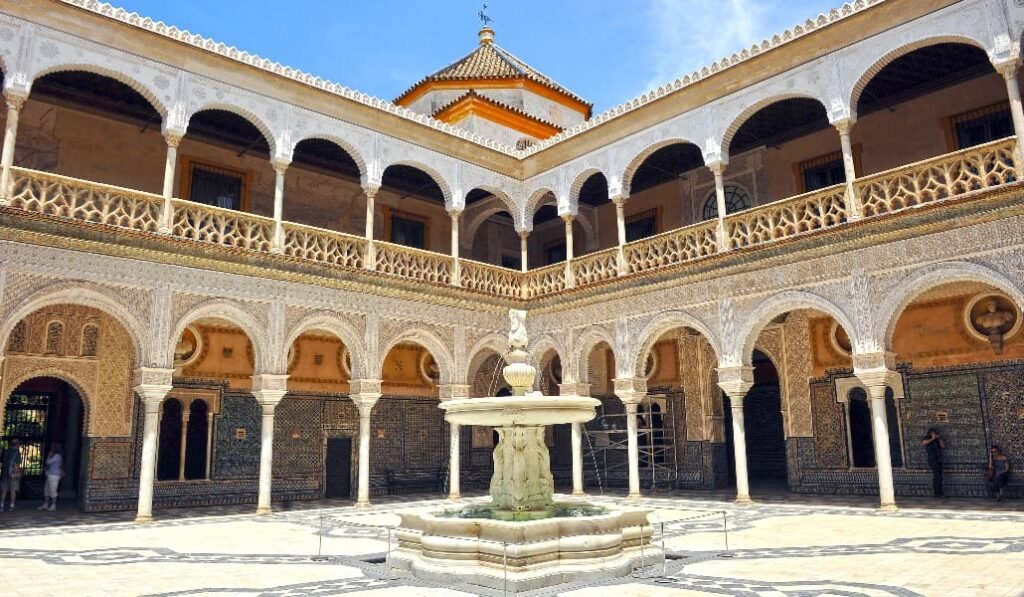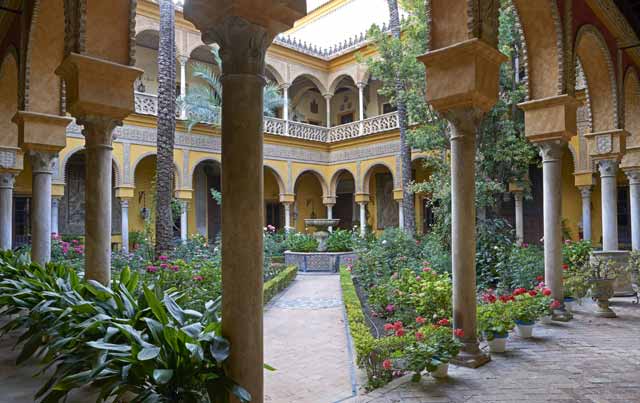Seville is not only worth a visit for its monuments and emblematic squares such as the Cathedral of Santa Maria de la Sede or the Plaza de España. It is also interesting to discover its hidden gems, such as the palace houses, which have an unparalleled architectural richness and house very important works of art, such as original paintings by Murillo, Zurbarán, etc…
In this post we will tell you which are the best palace houses that are currently open to the public.
Casa de las Salinas
The Casa Palacio de las Salinas was one of the first palaces built in Seville. It dates from the 15th century, that is, when the Sevillian nobles began to get rich thanks to the trade with the Americas. But, like most Sevillian palaces, it was renovated in the 16th century.
It is a palace house that combines the Mudejar style with the neoclassical. Of course, it has an arcaded courtyard with columns, like the rest of the palace houses that you can see in Seville. In fact, this house set a stylistic trend.

In addition, the Salinas house has its own legend. It is said to have been a Masonic lodge during the 12th century and was used to perform wicked rituals, which included burying corpses on the property.
If you want to visit it, it is located in the center, two minutes from the Giralda (in Mateos Gago street) and has guided tours in English and Spanish.
The Palace of the Countess of Lebrija
One of the palaces that are definitely worth visiting is the Palace of the Countess of Lebrija. If you like Roman mosaics and treasures from other eras, you have to visit it, as it is paved with authentic mosaics and has a very large archaeological collection: amphorae, coins, sculptures…

His paintings include works by Van Dyck, Bruegel, and the Old Man, by Murillo.
In 1901 the Countess acquired it and restored it to house her precious archaeological collection. A curiosity is that the rooms were custom built for the mosaics.
This Renaissance style palace was declared of Cultural Interest and Historical Heritage of Spain.
It is located on Calle Cuna (parallel to Calle Sierpes) and you can take a free visit if you only want to see the courtyards and the first floor, or a guided tour if you also want to see the second floor.
Pilate’s house
It is one of the best known palaces in Seville. It combines the Plateresque style with Gothic-Mudejar and Italian Renaissance. That is why it is a unique palace house.
It was Pedro Enriquez de Quiñones who had it rebuilt and gave it its current style, as he traveled to Italy and fell in love with Renaissance architecture.

It highlights its marble portal, at the entrance, and its main courtyard, rich in plasterwork and marble. In the main courtyard you can see 24 niches representing illustrious characters and emperors of classical times such as Tiberius, Trajan and Caligula.
It was also declared an Asset of Cultural Interest and Historical Heritage of Spain.
You can visit this palace in the Alfalfa neighborhood. Like other Sevillian palaces, you can visit the first floor on your own and the upper floor with a guide.
Casa de Dueñas
You probably already know that the Palacio de Dueñas belongs to the House of Alba and yes, you can also visit it.
Before it belonged to the Dukes of Alba, it belonged to the Pineda family since the 15th century, who remodeled it in the 16th century.

The Casa de Dueñas saw the birth of the poet Antonio Machado, since his parents rented one of its rooms for a while during the 19th century, when this house was a neighbors’ courtyard.
Years later, the Alba’s have invited many illustrious personalities, such as Grace Kelly or Jacqueline Kennedy.
If you are going to visit it, have enough time, because apart from seeing its priceless artistic heritage: paintings, furniture, tapestries, etc…, we recommend that you stop in its immense gardens with more than 117 species of plants.
The upper floor of the house of Dueñas is still inhabited, so only free or guided tours are available on the lower floor and gardens. On non-holiday Mondays you can visit it for free, but with a limited schedule.



